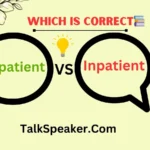Understanding the correct usage of hyphens, especially with prefixes like “reevaluation-,” is crucial for clarity in writing. Hyphens help to avoid ambiguity and ensure that your message is communicated effectively.
This article delves into the rules of hyphenation, focusing specifically on the prefix “re-,” to help you master this often-confusing aspect of English grammar.
The Role of Hyphens in American English
Hyphens play a significant role in American English by linking words and parts of words together to create clear and precise meanings. They prevent confusion by indicating how words are connected and how they should be read.
For example:
- High-quality vs. high quality (the former implies a single concept, while the latter can be interpreted as two separate ideas).
Understanding when and how to use hyphens is essential for professional writing. Incorrect hyphenation can lead to misunderstandings or an impression of carelessness.
When to Use Hyphens with Prefixes
Prefix hyphenation can be tricky. While some prefixes are always hyphenated, others depend on the context or specific word formations. Here’s a general guide:
General Rules for Prefixes
- Avoid Hyphens with Common Prefixes: For prefixes like “un-“, “pre-“, “post-“, “dis-“, and “mis-“, hyphens are typically not needed unless they help avoid confusion or ambiguity.
- Examples: Unhappy, preheat, postmodern, disagree, misunderstand.
- Use Hyphens with Prefixes to Avoid Confusion: Hyphens are used when a prefix is added to a capitalized word, a number, or when the prefix could be confusing without a hyphen.
- Examples: Re-enter, anti-American, pre-1960s, co-worker.
- Hyphenate When Prefixes Are Added to Words with Different Meanings: Use hyphens to clarify meanings when combining prefixes with words that might otherwise be misread.
- Examples: Re-cover (to cover again) vs. recover (to regain health).
The Prefix “Re-”: General Guidelines
The prefix “re-” means “again” or “back.” The decision to hyphenate “re-” depends on whether it could create confusion or misinterpretation.
When to Hyphenate “Re-“
- Clarity: If adding “re-” to a word would make the meaning unclear or confusing, a hyphen can help.
- Example: Re-evaluate (to evaluate again) vs. reevaluate (common, but clarity is often preferred in formal writing).
- Avoiding Double Vowels: Sometimes, a hyphen is used to prevent awkward or difficult pronunciations.
- Example: Re-elect (not reelect) to avoid the awkward combination of double vowels.
When Not to Hyphenate “Re-“
- Established Compound Words: When the prefixed word has become an established compound word without a hyphen.
- Example: Reimbursement, redefine, renew.
- Modern Usage: Many compounds with “re-” are accepted without hyphens in modern usage, reflecting how language evolves.
- Example: Reboot, revisit.
Reevaluation vs. Re-evaluation: A Case Study
The debate between “reevaluation” and “re-evaluation” showcases the nuances of hyphen usage.
Which is Correct?
- Standard Usage: “Reevaluation” is increasingly accepted in modern usage. However, “re-evaluation” is often preferred in formal writing for clarity.
- Style Guides: Different style guides may have different recommendations. For instance, the Chicago Manual of Style and the APA Style often lean towards hyphenation to avoid ambiguity.
Considerations for Different Contexts
- Academic and Professional Writing: Use “re-evaluation” to ensure clarity and adherence to formal writing standards.
- Informal and Digital Writing: “Reevaluation” is widely accepted and often used in less formal contexts.
The Impact of Omitting Hyphens
Omitting hyphens can sometimes lead to misinterpretations or awkward readings. Here are some examples:
Common Misinterpretations
- Reelect vs. Re-elect: Without the hyphen, it might be unclear whether the term refers to voting again or something else.
- Preclude vs. Pre-clude: Misreading could occur if the term is not hyphenated when clarity is needed.
Real-World Examples
- “Reform” vs. “Re-form”: Missing the hyphen in “re-form” might confuse readers about whether the term means to shape again or to change something fundamentally.
- “Recreate” vs. “Re-create”: Without the hyphen, it’s unclear if the word means to make again or to create anew.
The Importance of Hyphenation for Professional Writing
Proper hyphenation is crucial for maintaining clarity and professionalism in writing. It ensures that your audience understands your intended meaning without ambiguity.
Best Practices for Accurate Hyphenation
- Consult Style Guides: Always refer to relevant style guides for specific rules on hyphenation.
- Proofread Carefully: Check for hyphenation errors during the proofreading process to avoid miscommunications.
- Use Online Tools: Grammar checkers and hyphenation tools can help ensure your writing is clear and accurate.
Special Cases: Capitalization and Hyphenation in Titles
When dealing with titles and headings, hyphenation rules can change:
Guidelines for Titles
- Title Case: Follow title case rules, where hyphens are used to connect words that function together as a unit.
- Example: “Re-Evaluation of Marketing Strategies”.
- Capitalization: Ensure that hyphens are correctly used to maintain the proper capitalization of key terms in titles.
- Example: “Post-Modern Art” vs. “Postmodern Art”.
Capitalization Rules
- Capitalization After Hyphens: In titles, capitalize the first word after a hyphen if it is a significant word.
- Example: “Pre-Approval Process“.
- Lowercase After Hyphens: Use lowercase for articles, prepositions, and conjunctions following hyphens.
- Example: “Re-evaluation of the National Health Policy”.
Conclusion
Mastering hyphenation, especially with the prefix “re-,” is essential for clear and effective writing. Hyphens help avoid confusion and enhance readability, particularly in formal contexts.
Best Practices:
- Follow established guidelines and consult style guides.
- Use hyphens where clarity is needed and avoid them where they are unnecessary.
- Proofread and review your work to ensure accurate hyphen usage.
By understanding and applying these hyphenation rules, you can improve the precision and professionalism of your writing.

Sophie Mitchell, a seasoned English educator, brings her passion for language and years of teaching expertise to TalkSpeaker. With a knack for simplifying grammar and expanding vocabulary, she empowers learners to master English with confidence.




